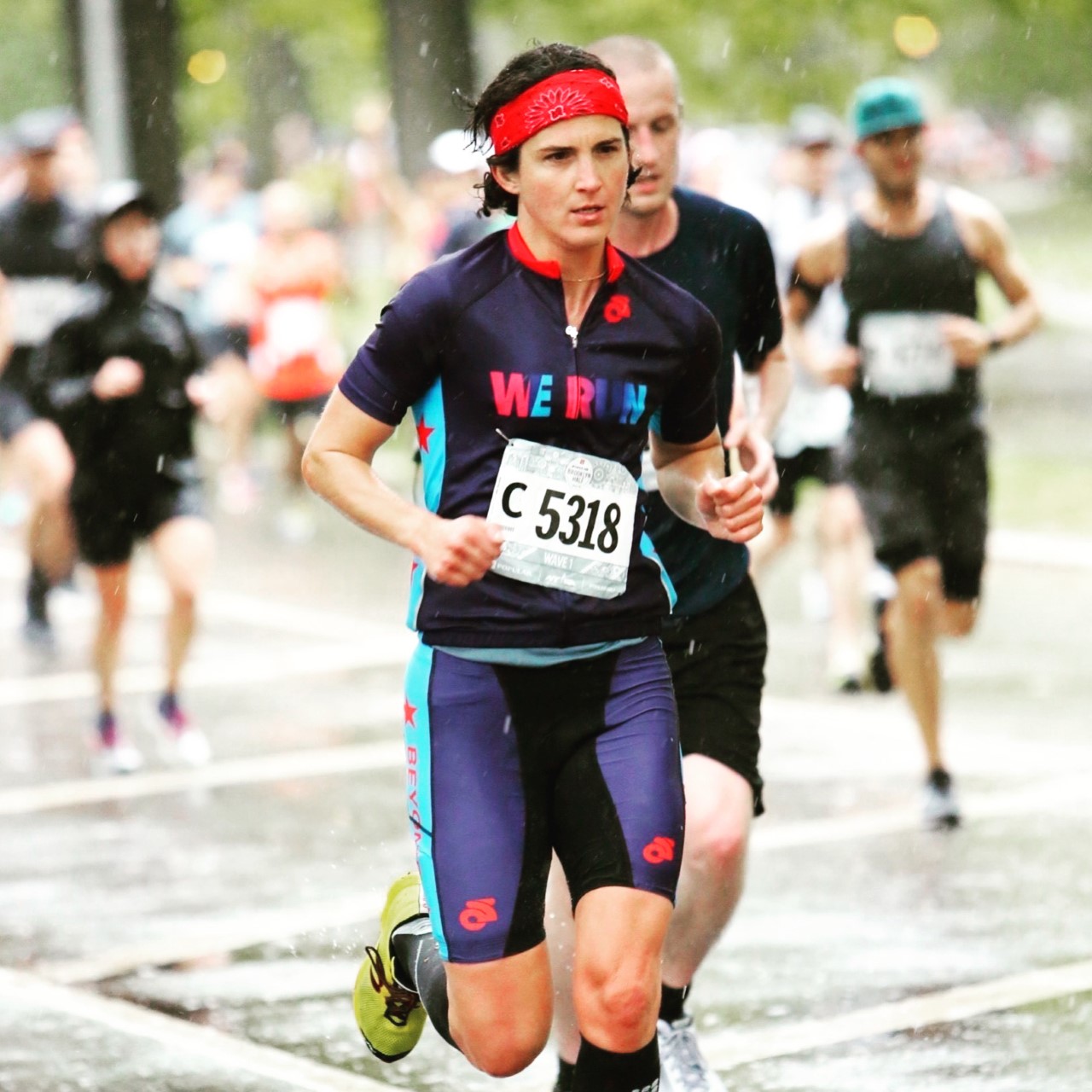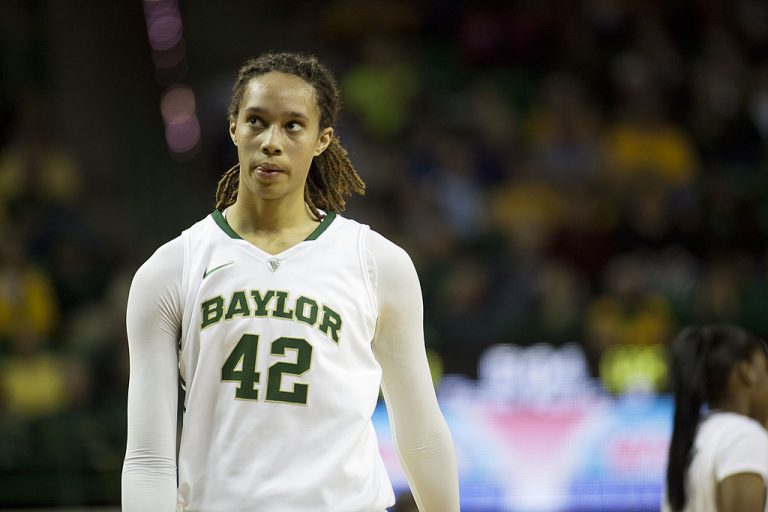Redesigning the System: How Trans and Non-Binary Athletes Are Transforming Sport
Why this matters
As legislation attempts to control how young trans athletes compete and grow, insiders like Lauren Lubin present an alternative: A sporting system that exists outside of the gender binary and is inclusive and equitable for all types of competitors.
Many of the characters who have become occupied with the structure and participants of sports in recent weeks have been political actors, who from many corners of the United States have come together largely in an effort to limit how and whether those who were assigned male at birth can participate in women's sports. But zoom in closer to these debates, and there are advocates with intimate knowledge of how sex and gender impact athletes' lives and careers -- people like Lauren Lubin.
While the political winds are blowing toward more control over gender in sport, recent Global Sport Institute/OH Predictive Insights polling data show that Americans are largely uncertain as to how to move forward in creating a sporting system that is inclusive of trans and gender non-conforming athletes.
The filmmaker, author and activist is also a non-binary athlete who, after playing women's college basketball, now competes in distance running (Lubin uses they/them pronouns). They spoke with Global Sport Matters about the current situation in athletics for gender non-conforming competitors, why the running industry has been a relatively early adopter, and how to think about sport in a way that removes gender completely.
Global Sport Matters: Tell us about your documentary, “We Exist: Beyond the Binary,” what inspired you to make it
Lauren Lubin: It is a film that intimately explores the life of those who exist outside the gender binary while living in a binary world, and more specifically, closely details my life’s story from really the moment I was born all the way up until my mid-20s, and my own experiences of identifying and feeling this way but really just coming into how I came to terms and really just understood who I was within this world.
It’s one of the first films to fully and exclusively document the topic, which was really groundbreaking at the time and really on the forefront of all the movement that we’ve seen today when it comes to the progress of understanding the rights of gender identity. And I remember very clearly it was 2012-13 when we decided to break ground on production and I decided to take the leap and really put my story out there.
At the time, there was very little visibility for non-binary folks or even trans folks for that matter. The biggest obstacle that we faced back then was an extreme amount of invisibility and silencing, to the point where it was next to nothing. I saw film as the ideal medium to confront head-on (what) are community faced. So it was a decision to cast a spotlight onto the then-shadows.
GSM: Have you heard from communities that have watched the documentary, and what is the feedback that you’ve gotten with regards to (making) visible what has been invisible for so long?
Lubin: It was twofold. The first one was almost immediate, and prior to even when the film came out. Just the name alone caused ripple effects all over the world. Just people writing in from all over, saying ‘I finally feel heard, I finally feel recognized, I finally feel brave enough to live my life authentically or at all, for that matter.’ It was a moment of reclamation and validation for so many people who felt so isolated within themselves. And that was very powerful for me, because I lived that way, and I recognized how much I had never seen my own reflection anywhere in the world.
The second part of that was our main goal in terms of how we thought of the film was the educational component. We saw that as the most necessary thing, to really address the educational needs of where people are and were at the time, really just realizing that in order for change to happen, people need a foundational education underneath them. And the reason why things are the way they are, you can paint a million sob stories or get angry about a lot of things, but the root of it is a lack of education, and the ignorance simply because there was an (ignoring).
GSM: What are your current thoughts on the wave of state bills being brought forth in the United States against transgender athletes, and what is the potential impact for non-binary and gender non-conforming athletes?
Lubin: It’s disturbing at every level. You’re attacking children. You’re attacking the most marginalized communities, basically just defenseless people, and without a leg to stand on and with zero evidence suggesting (malfeasance) and such a small percentage of a population (that is competing in an unfair manner). The optics are atrocious, and that in and of itself is very disturbing.
What we’re seeing with gender non-conforming folks and non-binary folks is that’s the second wave of all of this. The real pushback here is you push the system, it pushes back harder. The intersection that we’re standing at is that sports and gender have hit a crossroads, in that the system of sport is antiquated and flawed. It is not meeting modern times, and there is no one calling (the antiquation of the) gender binary into question more than non-binary and trans folks, and that’s the pushback that we are seeing with the opposition (from state houses and political actors).
GSM: Are there other ways to establish equitable environments, and if so what are the examples that lawmakers and the public should be following?
Lubin: The Philadelphia Distance Run is the first U.S. distance race to offer a non-binary divison with equal prize money all the way up to the elite level. They have been working on putting together equitable and equal standards, and really meeting the times. That’s a great example to turn to.
Another example is the New York Roadrunners. Starting on (June 26), they will be implementing non-binary registration for runners in their races. That’s another example, and those are for people to turn to and say, ‘oh, they’re really doing it,’ and hopefully they can be a model for others. But the running community has been the first to embrace this.
I worked in women’s sports for a number of years, and why women are still fighting for equality is we have a system that was designed as a patriarchy, and for so long, we’ve been trying to shoehorn everybody who wasn’t included into that system. That approach is never going to work, and there’s been progress, but that’s why we have the Megan Rapinoes and the whole U.S. Women’s National Soccer Team and ice hockey team and all these women that I’ve worked with who are speaking up louder than others saying ‘enough is enough, we need to go to the drawing board here.’ That’s the same for trans and non-binary folks, is we need to take a step back and take a look at how we’re going to redesign the system for an upgrade to meet the modern times. That means thinking of athletes from the get-go, rather than as an afterthought.
It’s nuanced, but it’s a very big distinction.
GSM: Why do you think it is that the running community has been at the forefront, and where do you hope that sport goes from here?
Lubin: Why I got into running was because I saw that as a vehicle, because it’s an individual sport, that my performance stays on me. Even if people wanted to say ‘you can’t do this, you can’t run this race, you’re not allowed here,’ well I just ran 26.3 miles. I did it. And I am an athlete, regardless of how I identify, and for athletes, because it’s an individual sport, there’s less barriers as opposed to team sports.
In addition to that, it is still very much based on numbers. I think that there has been an embrace by the running community, especially in distance, because it’s a community where so many runners run for so many purposes other than being the best. They run for reasons that are so much bigger than themselves, and it’s a sport that really embraces community, and people feeling like they’re a part of it.
GSM: What message does the world of sport (and beyond) need to hear now and what action(s) should/can be taken to deconstruct or rethink the gender binary in sport?
Lubin: We’re at a critical moment right now, with what’s happening in the political landscape, and there is an individual and collective need for people to stand up and take some real action here. It’s really just a question of if you do or you don’t take action, if you do or don’t do the work. And that’s really a matter of if you do or don’t feel like people deserve their rights. It’s a simple question. And sports is just a microcosm. It goes so much deeper than sports. That’s number one, and the first step to all of that is to invest in your education. You don’t know what you don’t know, and you cannot make the changes if you don’t have the proper foundation, and you’re not doing anyone justice.
On top of that, you will have such a far better understanding of what’s really happening. And if you do have that understanding, then it becomes unquestioned what has to happen and why.
GSM: Is there anything else the public should know as we continue to move forward under an evolving relationship between gender and sport?
Lubin: The (last big) part is getting over our own internalized fear about change. And that’s a big one. There’s a lot of fear about what this type of change can bring and the fear of something breaking, a fear of gender breaking or sports breaking because of the change. My biggest message is you cannot break gender. It is flexible and fluid. It is unbreakable. And you cannot break sport. It is also flexible and fluid and a construct. There’s nothing to fear.
Monthly Issue
Beyond the Binary in Sport
The spectra of sex, gender, and sexuality challenge our traditional understanding of sport and competition, but are increasingly central to the conversation around athlete and fan experience.
With legislation and organizing increasing around how these various identities intersect, sport makes a natural landscape for discourse and broadening our knowledge of these conversations. How are perspectives changing, and what can we discover by diving into the multitudes underneath these nuanced topics?







